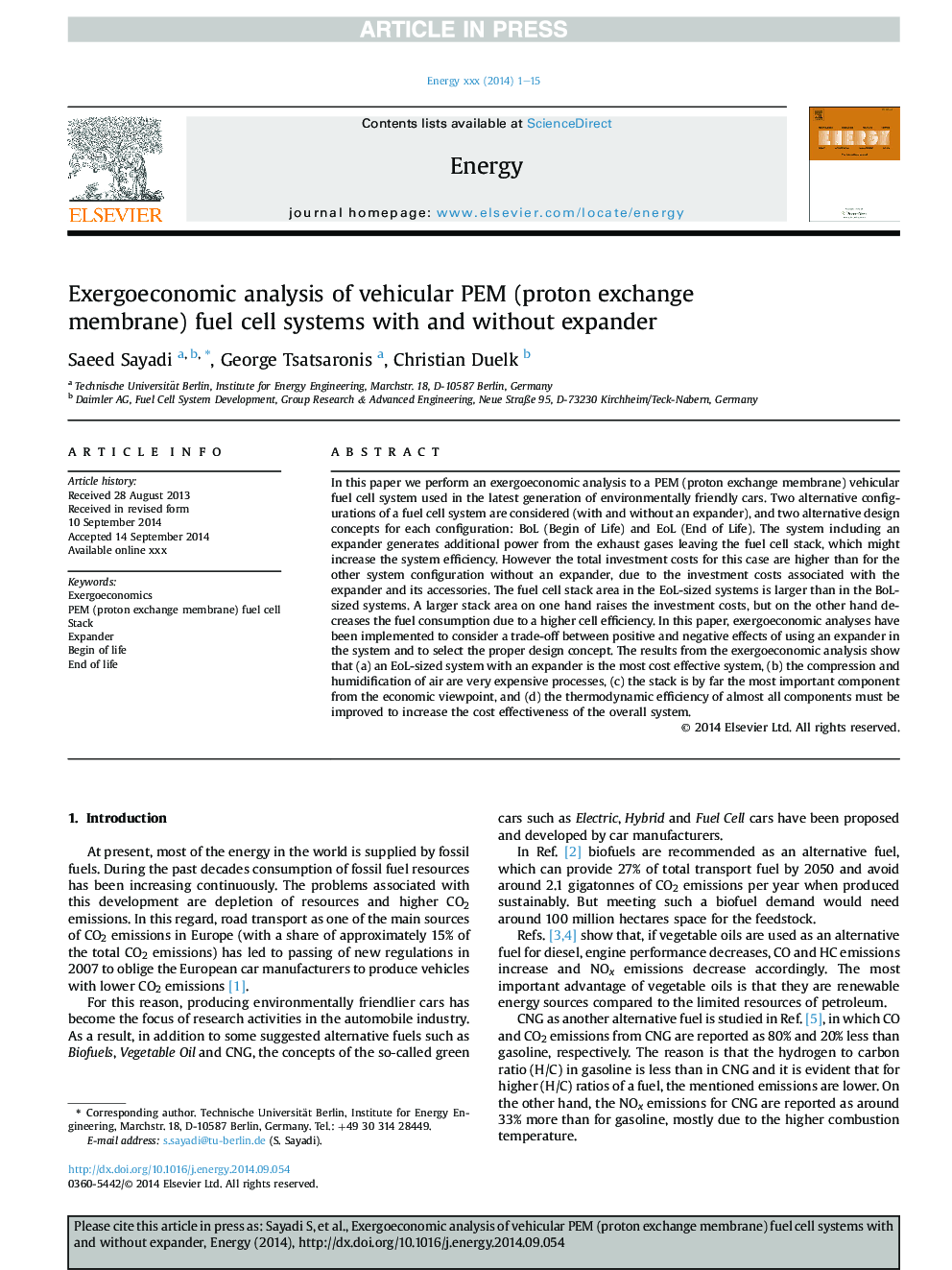| کد مقاله | کد نشریه | سال انتشار | مقاله انگلیسی | نسخه تمام متن |
|---|---|---|---|---|
| 8076520 | 1521469 | 2014 | 15 صفحه PDF | دانلود رایگان |
عنوان انگلیسی مقاله ISI
Exergoeconomic analysis of vehicular PEM (proton exchange membrane) fuel cell systems with and without expander
دانلود مقاله + سفارش ترجمه
دانلود مقاله ISI انگلیسی
رایگان برای ایرانیان
موضوعات مرتبط
مهندسی و علوم پایه
مهندسی انرژی
انرژی (عمومی)
پیش نمایش صفحه اول مقاله

چکیده انگلیسی
In this paper we perform an exergoeconomic analysis to a PEM (proton exchange membrane) vehicular fuel cell system used in the latest generation of environmentally friendly cars. Two alternative configurations of a fuel cell system are considered (with and without an expander), and two alternative design concepts for each configuration: BoL (Begin of Life) and EoL (End of Life). The system including an expander generates additional power from the exhaust gases leaving the fuel cell stack, which might increase the system efficiency. However the total investment costs for this case are higher than for the other system configuration without an expander, due to the investment costs associated with the expander and its accessories. The fuel cell stack area in the EoL-sized systems is larger than in the BoL-sized systems. A larger stack area on one hand raises the investment costs, but on the other hand decreases the fuel consumption due to a higher cell efficiency. In this paper, exergoeconomic analyses have been implemented to consider a trade-off between positive and negative effects of using an expander in the system and to select the proper design concept. The results from the exergoeconomic analysis show that (a) an EoL-sized system with an expander is the most cost effective system, (b) the compression and humidification of air are very expensive processes, (c) the stack is by far the most important component from the economic viewpoint, and (d) the thermodynamic efficiency of almost all components must be improved to increase the cost effectiveness of the overall system.
ناشر
Database: Elsevier - ScienceDirect (ساینس دایرکت)
Journal: Energy - Volume 77, 1 December 2014, Pages 608-622
Journal: Energy - Volume 77, 1 December 2014, Pages 608-622
نویسندگان
Saeed Sayadi, George Tsatsaronis, Christian Duelk,